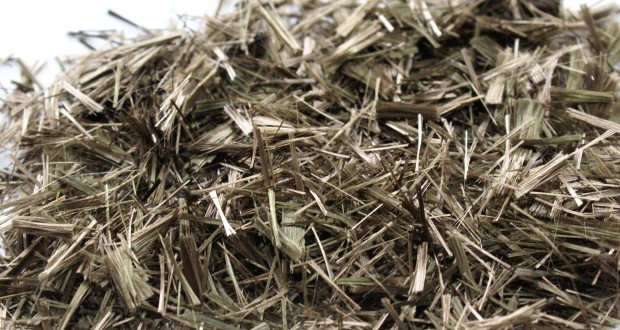
Basalt fibre for concrete mix
- Posted on
- admin
Basalt fibre for concrete mix study
The shortcomings of plain concrete can be reduced by adding reinforcing bars or prestressing steel. Reinforcing steel is continuous and is specifically located in the structure
to increase performance. Fibres are discontinuous and are generally distributed randomly
throughout the concrete matrix. Randomly dispersed fibres provide a three-dimensional
reinforcement compared to the traditional rebar which provides two-dimensional
reinforcement. Fibre reinforced concrete can be a cost effective and useful construction
material because of the flexibility in methods of fabrication. In slabs on grade, mining,
tunneling, and excavation support applications, steel and synthetic fibre reinforced
concrete and shotcrete have been used in lieu of welded wire fabric reinforcement
One of the greatest benefits gained by using fibre reinforcement is improved long-term
serviceability of the structure or product if properly engineered. Serviceability is the ability
of the specific structure or part to maintain its strength, integrity, and to provide its designed
function over its intended service life. Fibres can prevent the occurrence of large cracks.
These cracks permit water and contaminants to enter causing corrosion of reinforcing steel.
In addition to crack control and serviceability benefits, use of fibres at high volume
percentages (5% to 10% or higher by volume) can substantially increase the tensile strength
of FRC .
Basalt fibres are manufactured in a single-stage process by melting crushed volcanic basalt
rock. They are environmentally safe, non-toxic, possess high heat stability, and insulating
characteristics, and have an elastic structure. Basalt fibres are extremely strong and durable
and hence, it is an ideal material for structural and other construction related applications.
It provides unique mechanical properties when used in composite materials. The
mechanical characteristics of roving depend on the diameter of the elemental fibres.
Elemental fibres with smaller diameter show higher tensile strength and modulus of
elasticity than those of elemental fibres with larger diameter.
Basalt filaments are made by melting crushed volcanic basalt rock . The molten material is then extruded through special platinum bushings to produce continuous filaments of basalt fibre. The three main manufacturing techniques of basalt filaments are centrifugal-blowing, centrifugal-multiroll, and dieblowing. The fibres cool into hexagonal chains resulting in a resilient structure
substantially stronger that steel or glass fibres. Its production creates no environmental
waste.
Basalt roving is a bundle of continuous mono-directional complex basalt fibres. Basalt fibre has electrical insulating properties 10 times better than glass and has better chemical resistance than glass fibre, especially in strong alkalis. It reduces the risk of environment pollution unlike glass fibre which produces high-toxic metals and oxides during its production. Furthermore, basalt fibre has higher stiffness and strength than glass fibre.
Chopped basalt fibres are made from a continuous roving using drum chopping machines Hence, the addition of basalt fibre does not increase the dead load of FRC compared to steel fibre.
Basalt fibres are corrosion resistant unlike steel fibres. In addition, basalt fibre also has
excellent temperature resistance anti-oxidation, and anti-radiation characteristics .
Following are some of the characteristics of basalt fibre:
– High tensile strength, high thermal conductivity, high modulus of elasticity, high
sound absorption, high friction, frost, heat, and moisture resistance
– Chemical resistance to acids/alkalis, and aggressive chemicals
– No carcinogenic risk or other health hazards
– Completely inert with no environmental risks (eco-friendly)
– Good fatigue resistance
– Electro-magnetic resistance
– Resistance to ultraviolet radiation
– Dielectric characteristics
– Light weight
Basalt fibre is an effective reinforcing additive component to concrete because it improves
the thermal and mechanical properties of concrete. Basalt fibre has good adhesion with the
cement matrix. The main factor for chemical stability of basalt fibre in concrete is the
presence of heavy metal oxides in its molecular structure (Al2O3 and Fe2O3), which
prevents disintegration of basalt fibres in a highly alkaline concrete environment.
Beyond Materials Group is a growing manufacturer of non–ferrous basalt fibre materials and can meet your specification and quality requirements for a wide variety of custom applications. From our head office in Gold Coast we are able to ship our basalt products Australia wide.
Gold Coast, Brisbane, Sydney, Adelaide, Melbourne, Perth.
